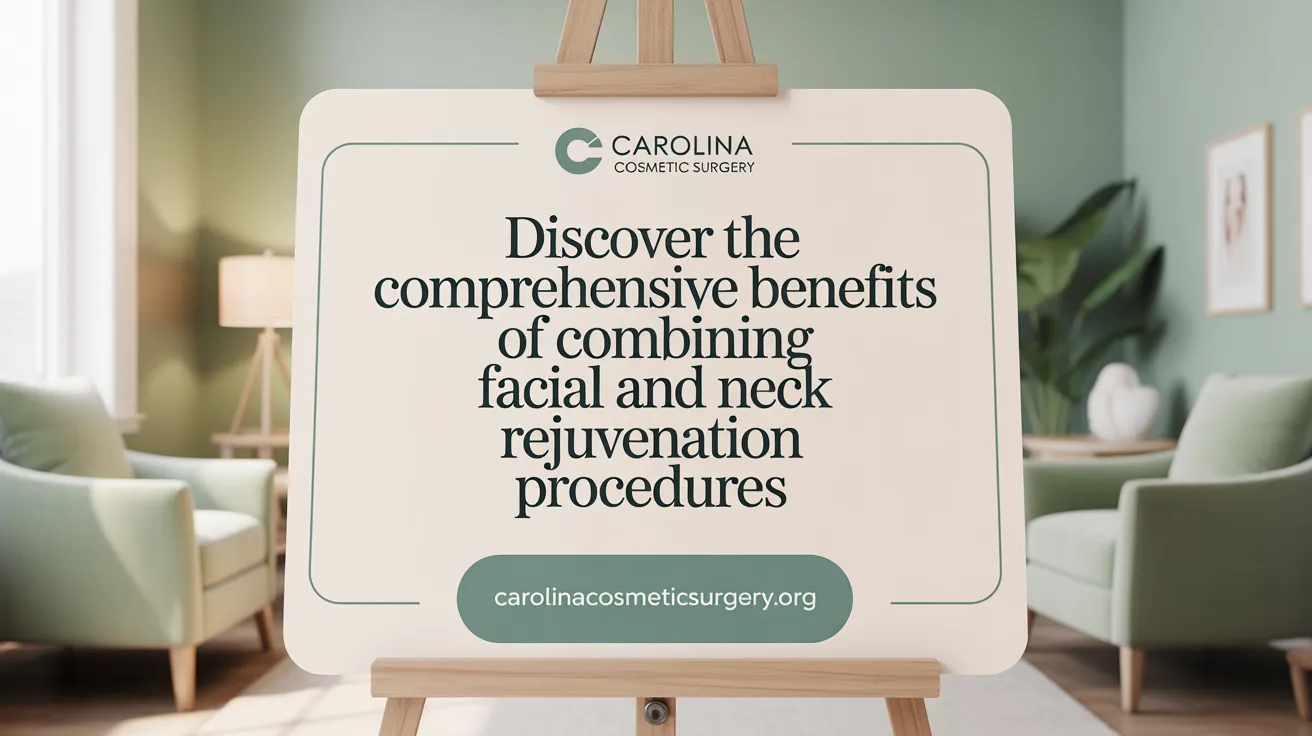Understanding Facelift and Necklift Combination Surgery
Combining facelift and necklift procedures has become increasingly popular among patients seeking comprehensive facial rejuvenation. This approach targets sagging skin and muscle laxity in both the face and neck, delivering a harmonious and youthful appearance. This article explores what patients can expect from the combined procedure, including benefits, surgical techniques, recovery, and post-operative care, offering a thorough insight into this transformative surgery.
<!-- VIDEO:eyJsaW5rIjoiaHR0cHM6Ly93d3cueW91dHViZS5jb20vd2F0Y2g/dj1vVHU2YVY3aU5BbyIsImltYWdlVXJsIjoiaHR0cHM6Ly9lbmNyeXB0ZWQtdGJuMC5nc3RhdGljLmNvbS9pbWFnZXM/cT10Ym46QU5kOUdjVFdibTNiTWE1Q2NVclNWeDVjY3FfZkJIXzZCckR5WjZsdTRUVEVwRGd3TE9jTCZzIiwidGl0bGUiOiJFdmVyeXRoaW5nIHlvdSBuZWVkIHRvIGtub3cgYWJvdXQgRmFjZSBhbmQgTmVjayBMaWZ0cyAuLi4iLCJzbmlwcGV0IjoiTGFzdCBlcGlzb2RlIHdlIGJ1c3RlZCBteXRocyBhYm91dCBmYWNlbGlmdHMuIE5vdyBpdCdzIHRpbWUgdG8gbWFrZSB5b3UgYW4gZXhwZXJ0IG9uIHRoZSBzdWJqZWN0LiBGcm9tIGluY2lzaW9ucyBhbmQgc2NhcmluZyB0byBkb3dudGltZSBhbmQgLi4uIn0= -->Benefits and Advantages of Combining Facelift and Necklift Procedures
 Combining a facelift and neck lift provides a comprehensive approach to facial rejuvenation by targeting multiple signs of aging in the face and neck areas. This combined surgery effectively lifts and tightens sagging skin, muscles, and tissues, helping patients achieve a refreshed, youthful look.
Combining a facelift and neck lift provides a comprehensive approach to facial rejuvenation by targeting multiple signs of aging in the face and neck areas. This combined surgery effectively lifts and tightens sagging skin, muscles, and tissues, helping patients achieve a refreshed, youthful look.
One of the main benefits is improved facial harmony. The procedure enhances jawline definition, reduces neck sagging, and eliminates double chin or "turkey neck" issues, ensuring that the lower face and neck blend naturally with the rest of the face.
Cost-effectiveness is another advantage. Patients only pay for one operating room, anesthesia, and recovery facility fees, making the overall treatment more affordable. Additionally, undergoing both procedures at once means only a single recovery period, typically lasting about 2-4 weeks, which is shorter than having two separate surgeries.
Recovery time is significantly reduced since patients recover from both procedures simultaneously. This minimizes downtime and allows individuals to return to their daily routines more quickly.
The results of combined facelift and neck lift surgeries are long-lasting, often maintaining a natural, youthful appearance for 10 to 15 years with proper skincare and maintenance.
Furthermore, performing both procedures together offers more natural and cohesive results. It helps achieve a balanced and proportionate facial profile, addressing all aging concerns in the lower face and neck, which individual procedures might not fully correct if done separately.
Overall, combining a facelift and neck lift not only provides a more complete facial transformation but also enhances patient satisfaction and confidence by restoring a naturally youthful and harmonious appearance.
Surgical Techniques and the Procedural Process

What is the usual surgical process and techniques used in facelift and neck lift procedures?
The surgical process of a facelift, particularly a deep plane facelift, involves precise incision placement to hide scars effectively. Incisions typically start in the scalp at the temples, extend around the front edge of the ears, follow along the groove where the ear meets the head, and may extend into the scalp or hairline for additional access. This strategic placement ensures scars remain concealed.
During the procedure, the surgeon dissects beneath the skin to access and elevate the superficial muscular aponeurotic system (SMAS), the layer of connective tissue and muscle that supports the facial structures. Techniques such as SMAS plication involve folding and suturing this layer to lift and tighten tissues, while SMASectomy entails excising a strip of loose tissue for a more significant lift.
For addressing specific neck issues, various methods are employed. The neck lift can involve platysmaplasty, where the neck muscles (platysma) are tightened or corseted with sutures to reduce banding and sagging. There are three main types of neck procedures:
- Simple liposuction for mild cases with good skin elasticity
- iGuide neck lift combining liposuction with fiber optic sutures for support
- Open neck lift with platysmaplasty for more moderate to severe skin and muscle laxity.
The entire operation usually takes about 3-5 hours, performed under general anesthesia. Surgeons meticulously handle facial nerves during dissection to minimize nerve injury risk. Postoperative effects include swelling, which peaks within the first week, but results can last from 7 to 15 years, depending on personal aging factors.
In summary, these advanced techniques prioritize natural-looking results, effective correction of sagging tissues, and the minimization of visible scarring and nerve injury, ensuring patients receive rejuvenation tailored to their specific anatomical concerns.
Candidate Suitability and Preoperative Considerations

What is the typical age range and health criteria for candidates?
Most patients seeking a facelift and neck lift are between their 40s and 60s, but the procedures can be successful for older individuals if they are in good health. Ideal candidates are generally non-smokers, with stable weight and no serious medical conditions that could impair healing.
How does skin quality and facial anatomy influence candidacy?
Candidates with good skin elasticity and a strong bone structure tend to achieve better, longer-lasting results. Conversely, poor skin quality or significant muscle laxity may require more extensive procedures or may influence the surgeon’s recommendations.
Why are realistic expectations important, and how are treatment plans personalized?
Surgeons tailor procedures based on individual facial features, aging signs, and personal goals. Clear communication about achievable results ensures patient satisfaction, with plans often combining facelifts, neck lifts, and possibly additional rejuvenation techniques.
What are contraindications and concerns about tobacco use?
Tobacco use significantly impairs healing and increases risks such as poor wound healing and scarring. Patients are advised to stop smoking several weeks prior to and after surgery for optimal outcomes.
Which signs of facial aging are typically addressed?
The procedures target sagging skin, jowling, loose neck muscles, double chin, and horizontal neck bands. They do not correct pigmentation issues like sun spots or freckles, which may require different treatments.
| Aspect | Details | Relevance |
|---|---|---|
| Age Range | 40s to 60s, but can include older patients in good health | Most common demographic for these procedures |
| Health Criteria | No serious health issues; non-smokers; stable weight | Ensures safe surgery and good healing |
| Skin Quality | Elastic skin and strong facial bones support better results | Affects longevity of the lift outcomes |
| Facial Aging Signs | Sagging skin, jowls, neck laxity, double chin | Areas targeted for correction |
| Factors to Consider | Realistic expectations, personalized plans, lifestyle factors | Critical for satisfying results |
This comprehensive approach helps identify suitable candidates for combined facelift and neck lift surgery, ensuring safe procedures and satisfying aesthetic results.
Recovery Timeline and Post-Operative Care Instructions

What is the typical recovery time after a facelift and neck lift combined procedure?
The healing process following a combined facelift and neck lift usually spans from one to three weeks. Most patients can return to their daily routines during this period. Swelling and bruising are common initially but tend to significantly diminish within two weeks. To promote proper healing, strenuous activities and heavy lifting should be avoided for at least two to three weeks. Recovery duration may vary based on individual factors such as skin elasticity, age, and the extent of the surgery. Full results develop gradually over several months as swelling reduces and tissues settle into their new positions.
During this time, patients may notice some tightness and minor discomfort, which typically improve as healing progresses. Understanding these milestones can help set realistic expectations and manage recovery effectively.
Types and Variations of Facelift and Necklift Surgeries
Mini facelift versus standard and deep plane facelift
Mini facelifts are less invasive procedures that typically target only the lower face and result in shorter recovery times of around 5 years of youthful appearance. They involve smaller incisions and are suitable for mild sagging. In contrast, standard facelifts address more extensive skin and tissue laxity, lifting and tightening the face and neck with procedures lasting 2-6 hours. Deep plane facelifts go further by elevating all facial tissue layers, providing more natural results and longer-lasting effects, often lasting 10 years or more. These involve more extensive dissection but require experienced surgeons.
Three main neck procedures
There are three main types of neck surgeries:
- Simple neck liposuction for younger patients with good skin tone.
- iGuide neck lift, combining liposuction with fiber optic sutures that lift the neck.
- Open neck lift with platysmaplasty, used for moderate to severe tissue sagging, involving incisions around or behind the ears.
Advantages of short scar facelift
The short scar facelift is performed as an office-based procedure, resulting in minimal visible scarring in front of or behind the ears. It offers faster recovery, usually under two hours, and is ideal for patients with early aging signs. Postoperative recovery is about 1-2 weeks, and the procedure provides effective correction while maintaining a natural look.
Duration and invasiveness differences
While mini facelifts are less invasive and take less time, deep plane and extended facelifts are more comprehensive and longer-lasting but involve more extensive dissection and longer operative times. Recovery periods vary accordingly, with mini procedures having shorter downtime.
Combining with other facial procedures
Facelift and neck lift surgeries are often combined with other procedures such as eyelid surgery, brow lifts, or chin liposuction. Combining these treatments enhances overall facial harmony, providing a more natural and comprehensive rejuvenation, often at reduced overall costs with a single recovery period.
Long-Term Outcomes, Risks, and Cost Considerations
How long do the results of a facelift and neck lift last, and what factors influence their longevity?
The effects of a facelift typically last between 7 to 10 years, with some lasting longer depending on individual factors. A neck lift's results can also last several years, often influenced by age, genetics, lifestyle, sun exposure, and skin elasticity. Younger patients with good skin tone and healthy habits tend to enjoy longer-lasting results.
Aging continues after surgery, so some natural changes may occur over time, gradually diminishing the initial improvements. Maintaining a healthy lifestyle and skincare routines can help prolong these results.
What are common risks and complications associated with combining these procedures?
Risks include bruising, swelling, nerve injury, infection, poor wound healing, and, rarely, blood clots or adverse reactions to anesthesia. There's also potential for visible scarring, asymmetry, or changes in skin sensation. Serious complications are uncommon when performed by experienced surgeons.
How is scar management optimized during healing?
Incisions are made in hidden areas like behind the ear and hairline to minimize visible scarring. Surgeons often use precise techniques to place incisions within natural skin creases. Following post-operative instructions, such as keeping the area clean, reducing sun exposure, and avoiding smoking, can promote optimal healing and scar fade over time.
Why is combining a facelift and neck lift economically advantageous?
Combining these procedures reduces overall costs because patients pay only one set of operating room, anesthesia, and recovery facility fees. It also shortens the total recovery period—about 2-4 weeks—versus undergoing each surgery separately, saving time and expense.
How important is surgeon experience for successful outcomes?
Choosing a surgeon with extensive experience and proper credentials ensures nuanced techniques that result in natural-looking, lasting results. Skilled surgeons can better manage risks, minimize scarring, and customize procedures for individual facial structures.
What should patients expect regarding realistic post-surgery outcomes?
While results are long-lasting, they are not permanent. Aging and lifestyle factors influence how long the improvements last. Patients should have realistic expectations of subtle, natural enhancements rather than drastic changes, and understand that final, optimal results develop over months to a year as swelling subsides and tissues settle.
Summary and Final Insights on Facelift and Necklift Combo Surgery
Combining facelift and necklift procedures offers a powerful solution to achieve youthful, harmonious facial rejuvenation. With advances in surgical techniques, customized approaches, and careful candidate selection, patients can enjoy natural-looking, balanced results with manageable recovery and notable cost advantages. Understanding the surgical process, recovery expectations, and potential risks is essential for making informed decisions and ensuring optimal outcomes. Ultimately, working with an experienced, board-certified plastic surgeon is paramount to achieving the safest and most effective facial transformation possible.
References
- Why You Should Consider Combining a Facelift and Neck Lift
- Recovery from a Facelift Combined with a Neck Lift
- Combining a Facelift and Neck Lift: Most Popular FAQs
- Facelift, Mini Facelift, & Neck Lift | University of Utah Health
- Combining Neck Lifts with Other Procedures: Maximizing Facial ...
- Combine Your Facelift with a Neck Lift for a Balanced Appearance!
- Facelift & Neck Lift Surgery | The University of Kansas Health System
